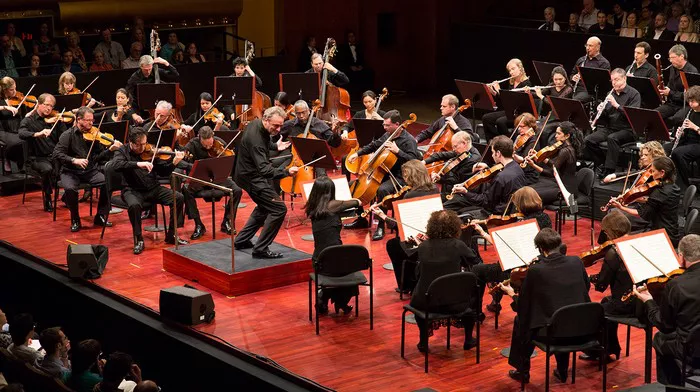Gustav Mahler, the late-Romantic Austrian composer, is renowned for his symphonic works that delve deep into the human experience, capturing emotions ranging from profound despair to exuberant joy. Among his symphonic repertoire, there is a perpetual debate among music enthusiasts and scholars alike: What is Mahler’s best symphony? This question sparks fervent discussions, as each of Mahler’s symphonies presents a unique narrative and musical landscape. In this article, we embark on a journey to explore and dissect Mahler’s symphonies, aiming to shed light on the elusive notion of his “best” work.
Understanding Mahler’s Symphonic Legacy
Mahler’s symphonic output comprises nine completed symphonies (with an unfinished tenth), each a monumental edifice in its own right. These symphonies are not merely musical compositions but grandiose statements reflecting Mahler’s worldview, grappling with existential questions and the complexities of human existence. From the expansive orchestration to the intricate thematic development, Mahler’s symphonies demand both emotional engagement and intellectual reflection from performers and listeners alike.
The Candidates: A Brief Overview
Symphony No. 1 in D Major (“Titan”): Mahler’s Symphony No. 1 serves as a captivating introduction to his symphonic world. Drawing inspiration from nature, folk melodies, and elements of the grotesque, this symphony embarks on a journey from primordial chaos to triumphant affirmation, encapsulating the essence of youth and the awakening of the human spirit.
Symphony No. 2 in C Minor (“Resurrection”): Widely regarded as one of Mahler’s most monumental works, Symphony No. 2 confronts themes of life, death, and transcendence. Its vast orchestral forces, including vocal soloists and chorus, traverse a spiritual odyssey, culminating in a breathtaking finale that promises redemption and renewal.
Symphony No. 3 in D Minor: Mahler’s Symphony No. 3 is a sprawling canvas that encompasses the entire spectrum of human experience. From the grandiosity of nature to the intimacy of folk poetry, this symphony traverses diverse musical landscapes, ultimately probing the mysteries of existence and the elusive nature of truth.
Symphony No. 4 in G Major: Symphony No. 4 represents a departure from the monumental scale of Mahler’s earlier works, offering a more intimate and pastoral experience. Evoking images of idyllic countryside life and childlike innocence, this symphony culminates in a serene vision of heavenly bliss, as depicted in the sublime final movement.
Symphony No. 5 in C-Sharp Minor: Mahler’s Symphony No. 5 marks a shift towards greater emotional intensity and structural innovation. From the tragic lament of the opening funeral march to the exuberant joy of the triumphant finale, this symphony showcases Mahler’s mastery of orchestration and his ability to evoke profound emotional states.
Symphony No. 6 in A Minor (“Tragic”): Aptly nicknamed “Tragic,” Symphony No. 6 delves into the darker recesses of the human psyche, grappling with themes of fate, struggle, and ultimately, resignation. Its relentless march towards an inevitable conclusion mirrors the tragic trajectory of human existence, leaving a profound and haunting impression on listeners.
Symphony No. 7 in E Minor: Symphony No. 7 presents a kaleidoscopic array of moods and textures, ranging from the eerie nocturnal visions of the first movement to the exuberant dance rhythms of the finale. Despite its initial reception as enigmatic and elusive, this symphony rewards attentive listeners with its rich musical tapestry and imaginative orchestrations.
Symphony No. 8 in E-Flat Major (“Symphony of a Thousand”): Symphony No. 8 is a monumental tour de force, featuring an unprecedented assemblage of vocal and instrumental forces. Inspired by Goethe’s Faust, this symphony unfolds as a cosmic drama of redemption and apotheosis, culminating in a transcendent vision of divine grace and universal salvation.
Symphony No. 9 in D Major: Mahler’s Symphony No. 9 serves as a poignant reflection on mortality and farewell. Its four movements trace a trajectory from earthly longing and nostalgia to serene acceptance and resignation, culminating in a hauntingly beautiful Adagio that fades into silence, echoing the composer’s own impending mortality.
Analyzing the Contenders
Determining Mahler’s best symphony is a subjective endeavor, influenced by individual tastes, interpretative preferences, and philosophical leanings. Each symphony offers its own unique insights and emotional resonance, making it difficult to crown a definitive winner. However, certain criteria can guide our evaluation:
Emotional Depth: How deeply does the symphony resonate with the human experience? Does it evoke a wide range of emotions, from profound despair to exalted joy?
Structural Integrity: How effectively is the symphony organized and developed? Does it demonstrate a mastery of form and thematic transformation?
Orchestration and Instrumentation: How skillfully does the composer utilize orchestral colors and textures to convey musical ideas and emotional nuances?
Philosophical and Narrative Coherence: Does the symphony present a compelling narrative or thematic trajectory? Does it engage with existential questions or universal themes?
Impact and Legacy: What is the symphony’s cultural significance and enduring appeal? How has it influenced subsequent generations of composers and performers?
Conclusion
In the realm of Mahler’s symphonies, there is no clear victor in the quest for the “best” work. Each symphony is a masterpiece in its own right, offering a profound glimpse into the complexities of the human soul and the vastness of the cosmos. Whether one finds solace in the sublime beauty of the Adagio from Symphony No. 5 or is swept away by the cosmic grandeur of Symphony No. 8, the journey through Mahler’s symphonic world is an enriching and transformative experience. Ultimately, the question of Mahler’s best symphony remains tantalizingly elusive, inviting continual exploration and discovery for generations to come. As we immerse ourselves in the timeless music of Gustav Mahler, we are reminded of the boundless capacity of art to illuminate the human condition and transcend the limitations of time and space.

